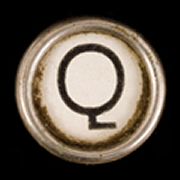For most the Cambodian working week spans all seven days so public holidays are special occasions. Fortunately for us we timed our stay here well as it coincides with a number of the major festivals.
Our first, Bchum Ben (the festival of the dead) meant that Amy had a five-day weekend. For this holiday people discard their urban existence and return to their place of birth to spend time with family and celebrate the lives of those whom have past. Even better, this simple celebration of family and loved ones doesn’t seem cheapened by the commercialism typical of most western holidays.
For our first weekend away, we decided to journey to the home of the ancient kingdom of Angkor. The city of Siem Reap, a five-hour bus-ride from Phnom Penh, is the gateway to the most magnificent of the temples built by the kings of Angkor to house their gods.
After another bus trip overseen by a maniac we arrived in Siem Reap thankful to be alive. We made our way to our hotel, the Golden Temple.
After checking in, our first point of order was organising the transportation for our Angkor adventure. We only needed to go as far as reception where for $12 we arranged a Tuk Tuk and driver from dawn until dusk the following day.
With the admin out of the way we decided it was time to take a mosey around. Siem Reap is a funny little town; hot and half asleep by day, busy and vibrant by night, beautiful French colonial buildings next to massive modern hotel developments. The gentle waters of Stung Siem Reap that wind through the town centre creates a further contrast: the tree-lined boulevards that straddle the lush green banks starkly contrast with the dusty potted streets that extend back from the river.
On the west bank sits the Psar Market, a maze of stalls selling wares of all sorts, fresh produce, silks, jewelry and nic naks from opium pipes to bone carvings. The streets behind the market host countless bars and restaurants catering to foreigners and wealthy Cambodians. Tuk Tuk and moto drivers stalk these streets day and night attempting to solicit business with an enthusiasm that at times borders on aggression.
We wandered these streets and sampled the gastronomic delights before heading back to the hotel. We had a 5am appointment with Angkor history to keep.
The next morning, as we made our way bleary eyed and sleep deprived to see the eighth wonder of the world I realised that the digital camera I had procured from my sister had given up on the picture taking caper. Luckily, Amy had gone old school and brought along an old SLR and three rolls of film.
It is funny how quickly you forget life before the digital age. Using an analogue camera completely changes the way you approach photography. With a limited number of shots you tend to be far more careful and considered in what you shoot. You can’t just snap indiscriminately, safe in the knowledge that the weight of probability means you will get a couple of good shots. It definitely has its frustrations (getting caught with only a one shot for sunset) but it also had unexpected joys (the excitement and anticipation associated with getting your film developed). We got some rubbish shots but we had great fun getting them.
We started the day with a bang at Angkor Wat, the most majestic and sublime of the temples. After a series of conquests spanning more than six hundred years Angkor had become one of the most powerful empires in Southeast Asia. It reached the height of its power and influence in the in the twelfth century under the reign of Suryavarman II. He controlled the lands from modern day Myanmar (Burma) all the way across to Vietnam which encompassed the fertile Mekong plains, the sea routes around the Gulf of Thailand as well as the neck of the Malay Peninsula, the major trade route from India to Eastern Asia.
Angkor Wat was the capital city of Suryavarman II’s empire and contains the largest Khmer temple ever built: the architectural and physical expression of the might of the empire. Covering an area of almost 200 hectares framed by a broad moat the city would have encompassed and been home to about a million people.
At its heart sits a state temple dedicated to the Hindu god Vishnu. The majestic towers that crown the stepped pyramid rise to dominate the jungle skyline. We spent hours exploring the surrounding galleries basking in the splendor of the intricately carved laterite and sandstone walls and columns. The bas-reliefs were particularly spectacular, the wall of an entire gallery carved from floor to ceiling with Hindu epics: the Battle of Kurukshetra, the Procession of Suryavarman II, the Judgement of Yama and Heaven and Hell and the Churning the Sea of Milk. Some are 100m long, the detail is amazing and the iconography fascinating.
We spent the remainder of the day exploring the different temple complexes built by the Angkor kings at different stages of the empire’s history. We traveled in our Tuk Tuk passing families picnicking for Bchum Ben.
Each temple has unique architecture, art and astmosphere: the imposing gates of Angkor Thom, the enormous face-towers at Bayon, the carved stairways of the Elephant and Leaper King Terraces, the temple-mountain of Ta Keo with its amazing view and breathtakingly steep steps.
A highlight was the jungle claimed ruins of Ta Prohm where the gnarled roots of enormous ancient trees intertwine through the ruins forming an ancient algorithm of nature and design.
In a fitting end to the day we enjoyed the sunset and the spectacular views of Angkor Wat and the surrounding plains from the hill top temple of Phnom Bakheng. Amy carefully composed and took our last photograph while fifteen hundred fellow Bchum Ben revelers (and a Japanese film crew) snapped away.

